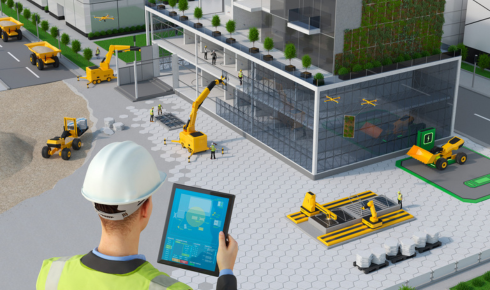Building Smarter: Key Trends Shaping the Future of Construction Projects

Key Takeaways:
- The construction industry rapidly adopts emerging technologies, sustainability methods, and efficient project delivery systems to meet evolving demands.
- Collaboration, smart planning, and innovative digital tools help minimize risk, maximize safety, and increase project success rates across all builds.
- Understanding current trends and applying practical strategies to solve complex challenges in today’s market benefits clients and construction professionals.
Why Construction Projects Are Changing So Rapidly
The construction landscape is experiencing significant transformation, responding to everything from global supply chain pressures to the growing demand for sustainability. Whether it’s large urban developments, educational facilities, or retail centers, change is prevalent across commercial and residential sectors. Today, many projects—especially those overseen by commercial general contractors Sacramento, CA—must integrate innovation at each stage to stay on track with budgets and timelines. Contemporary construction methods move beyond merely meeting minimum requirements; they focus on optimizing outcomes for all stakeholders.
One driving factor in this transformation is the need for greater resilience and adaptability. As the world bounces back from economic uncertainties and labor shortages, both owners and contractors are rethinking strategies that once seemed set in stone.
Top Technology Trends Revolutionizing Construction
Technology now sits at the heart of forward-thinking construction projects, redefining how teams collaborate, design, and build. Tools like Building Information Modeling (BIM) are game-changers for architects, engineers, and general contractors. With BIM, entire structures are built digitally, allowing even the smallest details to be analyzed and optimized before ground is broken. This leads to notable reductions in costly on-site changes, as conflicts between systems or phases are resolved early in the planning process.
Drones, too, have taken on new roles. They provide real-time aerial data and detailed imagery that would be difficult—or dangerous—to obtain otherwise. Their use streamlines progress tracking, site inspections, and even inventory management.
- BIM technology: Resolves complex design issues before construction starts to reduce project risk.
- Drones: Deliver accurate aerial site assessments and speed up surveying work.
- Wearables: Increase on-site safety and efficiency by alerting teams to real-time worker conditions.
- Mobile apps: Improve team communication for instant issue resolution, from design teams to field crews.
Why Teamwork Is Non-Negotiable
The importance of teamwork in construction cannot be overstated. Poor communication has long plagued the industry, with studies finding that unclear messages and siloed decision-making account for up to half of all costly rework on job sites. Good general contractors start with clear, measurable objectives and ensure every stakeholder—from project managers to field crews—knows their responsibilities and who to report progress to.
Teams that use smart collaboration platforms keep everyone on the same page, while regularly scheduled check-ins allow problems to be addressed well before they spiral. The most effective construction teams document every change and update in real time, creating a shared record that enhances transparency and accountability.
- Establish clear, unified project goals and needs at the outset.
- Select digital tools to provide real-time status visibility and streamline approvals.
- Meet regularly for constructive dialogue, not just compliance updates.
- Maintain comprehensive documentation for shared reference throughout the project lifecycle.
Safety Innovations That Save Lives
A safety culture is critical to the productivity and reputation of any contractor or construction manager. While basic safety training is essential, new innovations help teams go further, addressing predictable risk factors in real time. Wearable sensors now provide biometric feedback, alerting managers if a worker is overheated or not wearing required PPE. These technologies use live data to help prevent accidents before they happen, reducing injuries and saving lives.
Artificial Intelligence-equipped cameras scan for unsafe behaviors—such as ladder misuse or blocked exits—and alert supervisors for quick intervention. Drones safely monitor hard-to-reach scaffolds, cranes, or mechanical rooms, gathering intelligence that traditionally required riskier manual inspections. Sites that embrace these digital safety tools consistently report dramatically fewer accidents and a stronger sense of team trust.
Project Management Best Practices for Modern Builds
Successful project management is central to today’s high-performing construction firms and teams. Drawing from the lean construction movement, managers work to eliminate waste at every opportunity—whether it’s excess materials, idle time, or inefficient layouts. The adoption of cloud-based project collaboration tools makes scheduling, budgeting, and progress monitoring more transparent, with dashboards visible to every authorized participant.
Advanced analytics and data-driven risk forecasting quickly replace gut instinct as the preferred way to anticipate and respond to project challenges. Best-in-class contractors invest in predictive scheduling and detailed resource allocation to spot potential delays early, adjust team deployment, or work with suppliers to guarantee on-time material deliveries.
Looking Ahead: What Clients Should Expect
The industry is evolving quickly, with clients now expecting projects to combine efficiency, sustainability, and open communication from concept through completion. Digital documentation and transparent processes replace the old “design it, build it, fix mistakes” approach. Clients can anticipate smoother approvals, higher-quality outcomes, and teams that prioritize minimizing waste and maximizing value. Proactive involvement from experienced contractors who harness these new trends ensures budgets and deadlines are achieved—and often exceeded.
How to Stay Informed About Construction Industry Changes
Continuous learning is the secret to long-term success in the construction field. Subscribing to respected industry news sources or attending key conferences can yield vital updates on regulations, technology, and market opportunities. General contractors and clients benefit from staying in touch with trade organizations, leveraging free webinars, and collecting practical reference materials to keep ahead of emerging trends.
